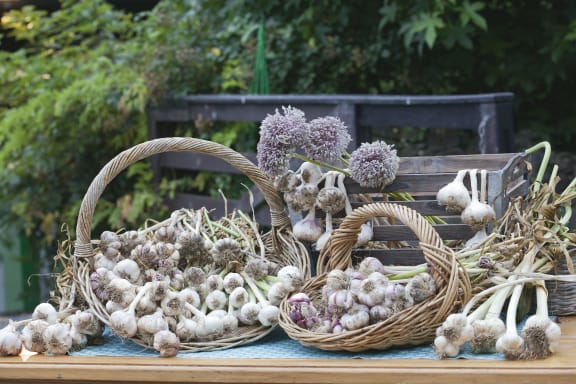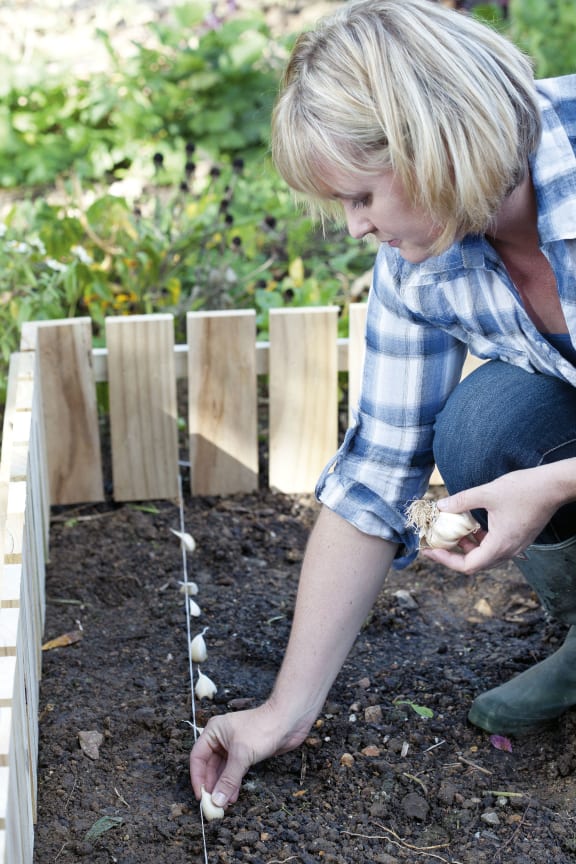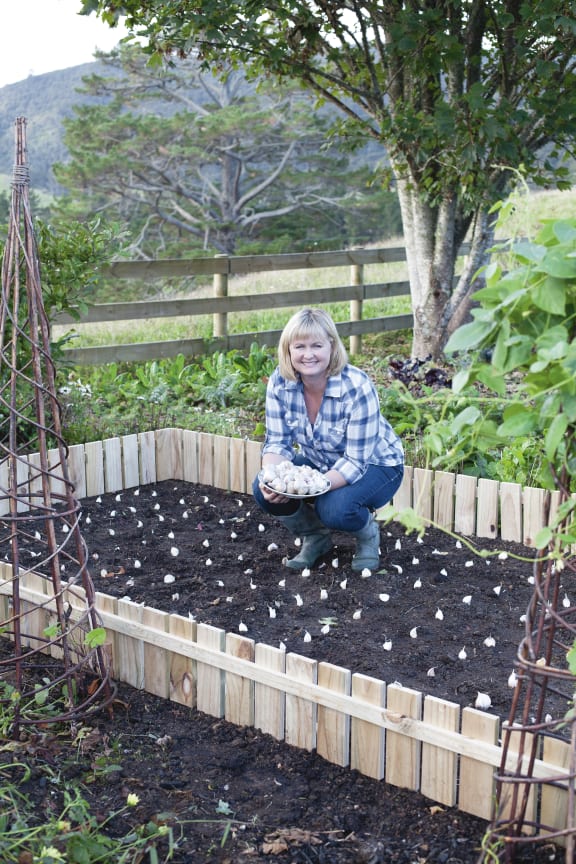Gardening guru and writer, Lynda Hallinan talks about growing your own garlic.
Garlic is a staple ingredient in a lot of cooking - but at certain times of the year New Zealand grown garlic can get pretty pricey. Lynda says growing garlic is something everyone should try at least once because it is "one of those ones that does actually taste better homegrown."
Lynda's best tips for growing garlic at home:
You’re only as good as the seed that you started with.
If you don’t start with really good quality New Zealand garlic, you are going to have problems. And how you know if it is New Zealand garlic is that it will still have some roots at the base. So if you’re buying a whole bulb, that means I was grown here, because if it was imported, they have to trim all of those roots off at the border.
Growing garlic is not a skill, sometimes even the experienced gardeners have a bad crop.
It’s really important that you put some effort into planting your garlic properly because I can tell you, as someone who has done it for 20-odd years, garlic is one of those things that’s not a skill. You don’t get better at it every year. Some years you have a fantastic crop, and for example last year was a really bad year for growing garlic. Mine was a disaster, other organic growers that I know had a disaster… there was a lot of rust last year, which ruins the quality of it. Unfortunately garlic is not one of those things that you can’t say, ‘I had a good crop last year, so this year is going to be the same’. You have to put the same amount of effort in every year.
Winter is the best time of the year to plant garlic.
Garlic planting is a real ritual because you traditionally do it on the shortest day of the year, so it’s kind of a pagan thing to do.
It doesn’t matter if it’s not the shortest day, as long as it is before the end of august. After august there is not enough day-time for the bulbs to fatten up before they stop growing about October and harden up.
Planting the garlic seeds:
Break up the bulb. The reason why you break it into individual bulbs is because you only plant the fattest cloves from each bulb. Set that aside for a couple of weeks. What that does is it breaks the dormancy. While you’re waiting for the dormancy to break, you get on with preparing your soil.
Plant the little cloves a good hand span apart. The reason is because if you grow garlic really well, like if you’ve got lots of fertiliser and lots of water, it will actually grow to the size of a leek. A really good garlic plant should be about the same size.
Garlic loves ‘muck’.
The key things are to put in heaps and heaps of muck. ‘Garlic loves muck’ is the best advice I have ever been given about growing garlic. When I say ‘muck’, I mean anything kind of organic. So, well-rotted horse manure, fish fertiliser, seaweed, sheep pallets… anything like that, get it into the soil. Chuck in a little bit of general garden fertiliser as well because it really does take all of that and grow well with it. So get that in and let it settle for a little bit and then on the shortest day you can get it in the ground.
Garlic is an anti-social vegetable.
Garlic likes full sun. You can’t really put it in a shady corner, it doesn’t really like being put in pots. It’s quite an anti-social crop as well. We think about when you eat lots of garlic, no one wants to be around you, and it’s kind of the same in the garden. It doesn’t like weeds, it doesn’t like growing near anything else, it likes having a bed all to itself and if you grow it like that, it will be bigger. Every time.
Harvesting begins at the end of the year.
It’s traditional that you harvest it on the longest day of the year. But the real key things with garlic if you’ve never grown it before is you should only really feed it at the beginning of the season. When it’s only a small plant poking out of the ground, September and October are the big months to grow underneath the ground. That is when it is bulb-ing up. That is when it is fattening up under the soil. That is when you want to feed it. By the end of October it has done all of the growing it is going to do and then after that it is just hardening up and maturing off and the skin underneath the ground is firming up so that when you do dig it up, it’s not just a bunch of naked cloves.







